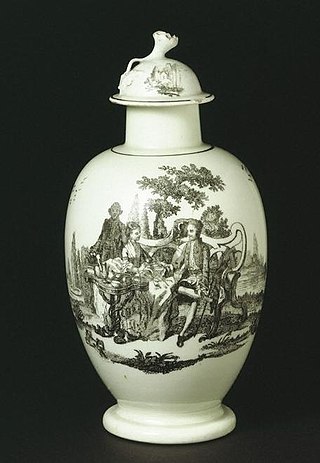Related Research Articles

Archduchess Elisabeth Marie Henriette Stephanie Gisela of Austria was the only child of Rudolf, Crown Prince of Austria, and Princess Stéphanie of Belgium. Her father was the son and heir apparent of Emperor Franz Joseph I of Austria, and her mother was a daughter of King Leopold II of Belgium. She was known to her family as "Erzsi", a diminutive of her name in Hungarian. Later nicknamed The Red Archduchess, she was famous for becoming a socialist and a member of the Austrian Social Democratic Party.

Elisabeth of Bavaria was Queen of the Belgians from 23 December 1909 to 17 February 1934 as the wife of King Albert I, and a duchess in Bavaria by birth. She was the mother of King Leopold III of Belgium and of Queen Marie-José of Italy, and grandmother of kings Baudouin and Albert II of Belgium, and Grand Duchess Joséphine-Charlotte of Luxembourg.

The Vincennes porcelain manufactory was established in 1740 in the disused royal Château de Vincennes, in Vincennes, east of Paris, which was from the start the main market for its wares.

Marie Henriette of Austria was Queen of the Belgians as the wife of King Leopold II. The marriage was arranged against the will of both Marie Henriette and Leopold and became unhappy due to their dissimilarity, and after 1872 the couple lived separate lives, though they continued to appear together in public. Queen Marie Henriette was described as an energetic and intelligent horsewoman, foremost devoted to her animals. In 1895, she openly retired from public life and lived her last seven years in the city of Spa, where she became known as "The Queen of Spa".

The Royal Crown Derby Porcelain Company is the oldest or second oldest remaining English porcelain manufacturer, based in Derby, England. The company, particularly known for its high-quality bone china, having produced tableware and ornamental items since approximately 1750. It was known as 'Derby Porcelain' until 1773, when it became 'Crown Derby', the 'Royal' being added in 1890.

Charles William Dyson Perrins FRAS was an English businessman, bibliophile, and philanthropist. He was born in Claines, near Worcester, the son of James Dyson Perrins, the owner of the Lea & Perrins Worcestershire sauce factory and the grandson of William Perrins, co-originator of the Lea & Perrins secret recipe.

Royal Worcester is a porcelain brand based in Worcester, England. It was established in 1751 and is believed to be the oldest or second oldest remaining English porcelain brand still in existence today, although this is disputed by Royal Crown Derby, which claims 1750 as its year of establishment. Part of the Portmeirion Group since 2009, Royal Worcester remains in the luxury tableware and giftware market, although production in Worcester itself has ended.

Mintons was a major company in Staffordshire pottery, "Europe's leading ceramic factory during the Victorian era", an independent business from 1793 to 1968. It was a leader in ceramic design, working in a number of different ceramic bodies, decorative techniques, and "a glorious pot-pourri of styles - Rococo shapes with Oriental motifs, Classical shapes with Medieval designs and Art Nouveau borders were among the many wonderful concoctions". As well as pottery vessels and sculptures, the firm was a leading manufacturer of tiles and other architectural ceramics, producing work for both the Houses of Parliament and United States Capitol.

Mildred Ruth Mottahedeh was an American collector of ceramics, businessperson, and philanthropist. With her husband, Rafi Y. Mottahedeh, she co-founded Mottahedeh & Company, a designer and supplier of luxury porcelain based on historical models or direct replicas. The couple also gathered a large personal collection of antiques, mainly Chinese export porcelain.

William Duesbury (1725–1786) was an English enameller, in the sense of a painter of porcelain, who became an important porcelain entrepreneur, founder of the Royal Crown Derby and owner of porcelain factories at Bow, Chelsea, Derby and Longton Hall.

Princess Marie Luise Alexandra Karoline of Hohenzollern-Sigmaringen, later Countess of Flanders, was a princess of Hohenzollern-Sigmaringen, later simply of Hohenzollern. She married Prince Philippe, Count of Flanders, second son of King Leopold I of Belgium, and she was the mother of King Albert I.

Prince Baudouin of Belgium was the first child and eldest son of Prince Philippe, Count of Flanders, and his wife, Princess Marie of Hohenzollern-Sigmaringen. After Baudouin's death, his younger brother eventually became heir presumptive after the death of their father, and later succeeded their uncle Leopold II as Albert I of Belgium.

Emilia "Emma" Fürstenhoff, née Lindegren, was a Swedish artist (florist), internationally known for her manufacturing and arrangements of artificial flowers of wax, which were a novelty in contemporary Europe.

Alaina Marie Beaton, known professionally as Porcelain Black, is an American singer-songwriter, rapper, and model. At age 16, she embarked on her music career as a solo act under the name Porcelain and the Tramps with Virgin Records. However, Black and Virgin could not agree on the music she would record. Her music was posted to her Myspace account, "rockcitynosebleed", where she gained millions of hits. After three years of trying to get out of the contract, she signed with RedOne's Universal Republic imprint, 2101 Records, late in 2009, and began working on her debut album. After many internal problems between the artist and record producer RedOne, Porcelain Black announced the partnership had come to an end, with anticipation of releasing her debut album in the vein of her Porcelain and the Tramps project in 2015.

Real Fábrica del Buen Retiro was a porcelain manufacturing factory in Spain. It was located in Madrid's Parque del Buen Retiro, Madrid on a site near the Fuente del Ángel Caído.
Isis Pogson,, was a British astronomer and meteorologist who was one of the first women to be elected as a fellow of the Royal Astronomical Society.
Thyra Beate Christiane Manicus-Hansen (1872–1954) was a Danish ceramist and trade unionist. As head of the Keramisk Malerforening, she successfully pressed for better pay and working conditions for those working as artists in Den Kongelige Porcelainsfabrik and Bing & Grøndahl porcelain factories. She also campaigned internationally for women's rights.
Events in the year 1891 in Belgium.

Léopoldine Clémence Adèle Lucie Jeanne Hugo was a Belgian-born French heiress and socialite during La Belle Époque. She was a granddaughter of French novelist, poet, and politician Victor Hugo. As an adult, Hugo was often written about in the press due to her status in Parisian high society and her connections to other members of the French elite.

Frida Maria Schou (1891–1980) was an early Danish businesswoman. Despite lifelong dyslexia, from 1928 to 1967 she ran Knabstrup Teglværk, a brick and porcelain factory near Holbæk in western Zealand. At the time, it was quite unusual for a woman to head such a large industrial establishment. She is remembered for her energetic and efficient leadership and for her concern for the well-being of a workforce of up to 160 employees. In addition, she was a board member of another brick factory, Skandinavisk Molerindustri on the island of Mors (1946–1970), serving seven years as chair.